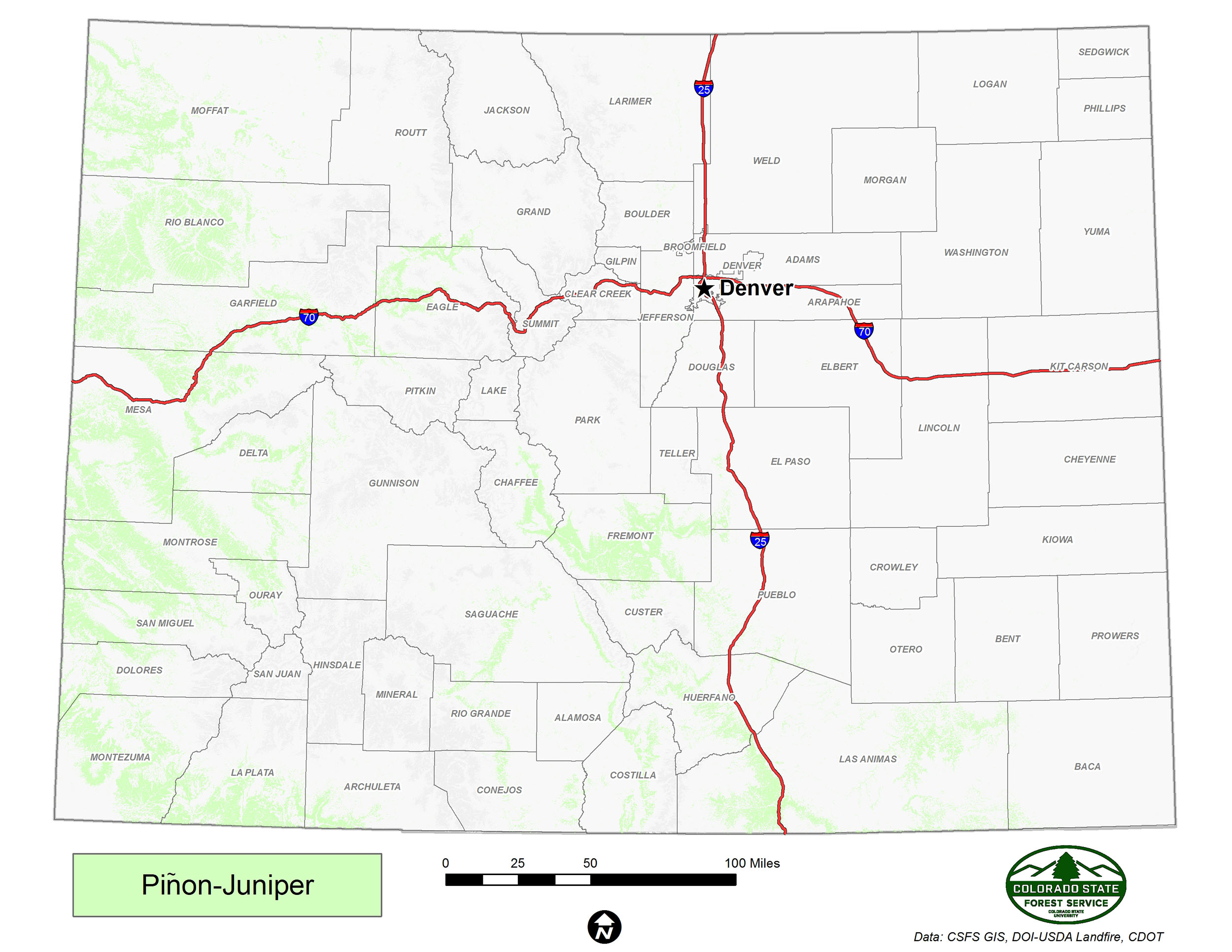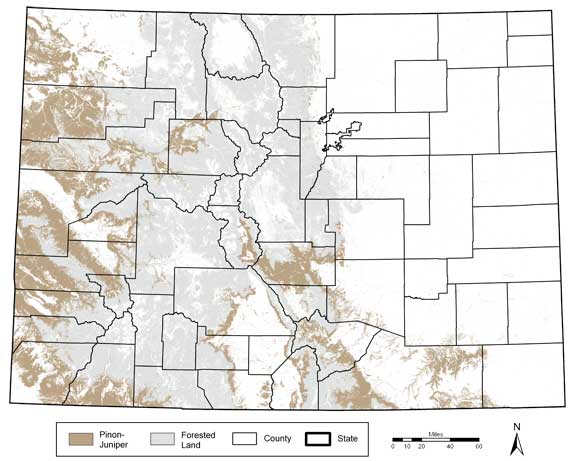Piñon–Juniper Woodlands
Piñon-juniper woodlands are widespread in the lower elevations ranging from 4,900 to 8,000 feet on Colorado’s West Slope and exist in limited distribution in south-central Colorado and on the Eastern Plains.
Click on the map to view full size
Major Species
The most common species within piñon-juniper woodlands are Colorado piñon pine (Pinus edulis) and Utah (Juniperus osteosperma) and one-seed (Juniperus monosperma) juniper, although Rocky Mountain juniper (Juniperus scopulorum) may codominate or replace one-seed juniper at high elevations. Piñon-juniper woodlands account for just over 5 million acres or approximately 21 percent of the state’s forested lands.
Piñon-Juniper Woodland Characteristics
Annual precipitation is typically from 10 to about 15 inches in piñon-juniper or “P-J” woodlands, and tree species in these communities have developed resistance to both drought and cold. Juniper tends to grow at lower elevations and in more arid areas as its scaled foliage allows it to conserve water more effectively than piñon pine.
Piñon-juniper stands vary considerably in appearance and composition, depending on soil depth, elevation and geographic locations. While piñon and juniper may co-occur in some landscapes, either species may be dominant on its own in others. Juniper-dominated woodlands tend to include open savannas of scattered trees without a significant shrub component, except in areas where big sagebrush has become dominant as a consequence of grazing. Woodland communities have expanded considerably over the course of this century in many parts of the Colorado Plateau, including New Mexico, Arizona and Utah. Tree densities have increased in some areas to the point that larger proportions of piñon-juniper woodland now support damaging crown fires.
Role in the Community
Although not a traditional timber species, piñon-juniper forests have long been important to local communities for such products as fuelwood, fence posts, pine nuts, forage for livestock and watershed protection. More recently, communities and businesses have begun to turn to piñon-juniper forests as a source of biomass for fuel and energy. Piñon-juniper forests also provide habitat for many of Colorado’s rarest plants along with the gray vireo, one of the state’s rare birds.
Learn More
For more information about piñon-juniper woodlands, see the 2009 Report on the Health of Colorado’s Forests (7 MB PDF) and Piñon-Juniper Management – June 2011 (401 MB PDF).
About Rocky Mountain junipers (Tree Cards 2.2 MB PDF)
Data Sources
NatureServe. 2018. International Ecological Classification Standard: Terrestrial Ecological Classifications. NatureServe Central Databases. Arlington, VA. U.S.A. Data current as of 28 August 2018.
2017 Colorado Wildfire Risk Assessment, Colorado State Forest Service.



